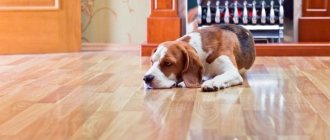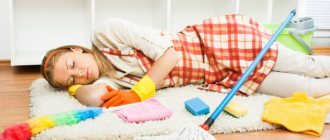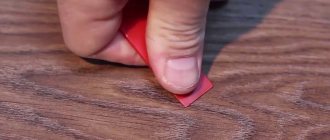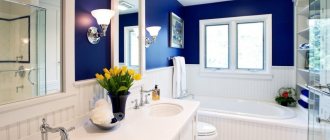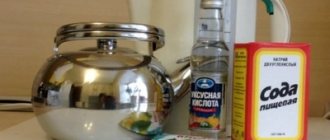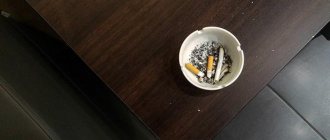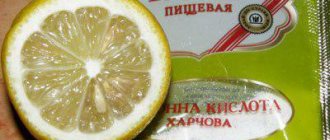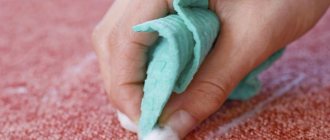The question of how and with what to wash laminate flooring so that there are no streaks is on the agenda of many housewives. The wide distribution of such flooring is due to its low price and attractive appearance. But careful care is required to keep it looking flawless and shiny.
Features of laminated coating
Laminate is a multi-layer building material that requires special care. The reason lies in its composition:
- the first bottom layer is stabilizing, sometimes equipped with noise insulation;
- the second is a supporting layer with a lock, made of wood;
- the third is a layer of painted paper that determines the appearance and design of the coating;
- the fourth is protective varnishing.
Based on the composition of the laminate, it is clear that it cannot be washed like tiles or parquet. If the manufacturer skimped on the quality of the inner layers, then this will not be visible to the naked eye. But you hardly want to experiment and fill it with water every day.
Important!
The weak point is the joints of the laminate planks along the length or end. It is in the area of the castle that the floor covering is most deformed when exposed to moisture.
Instructions for cleaning laminate floors
Find out the instructions on how to wash laminate flooring without streaks at home, following all the steps. It is noteworthy that cleaning an apartment with beveled laminate flooring is somewhat more difficult. More debris accumulates in recesses that imitate the surface of wood than on a smooth surface.
Pre-cleaning
Before washing laminate floors, collect all visible debris: street dirt, sand, toys, plastic fragments, scratchy parts or splinters.
Carefully remove contaminants such as stuck earth, plasticine, paraffin using a plastic spatula, wooden spatula or the corner of a scoop. Get rid of greasy stains from plasticine and paraffin, wipe the areas with medical alcohol.
Sweep away debris with a soft-bristled broom to avoid damaging the top layer of the laminate. Check for large debris in the corners of the baseboards and under the radiators.
Basic rules for washing laminate flooring
- Wash laminate flooring for stains quickly, using as little water as possible. The faster the moisture evaporates and the less of it gets into the joints, the greater the likelihood of each lamella being preserved.
- Use specialized mops with a spin mode and a microfiber cloth. Do not use old towels, T-shirts or other rags. The result of washing with such things will be disappointing with an abundance of streaks and stains.
- During wet cleaning, provide access to air: open the balcony, window or doors. Make sure the water evaporates as quickly as possible.
- Start mopping the floor from the far wall towards the exit to avoid stepping on wet areas. Move in a zigzag manner.
- After wet cleaning, wipe the laminate floor to remove white deposits with a dry microfiber cloth. This will achieve polishing of the surface, plus remove any remaining water before it penetrates into the structure of the lamellas.
Washing rules
Laminate flooring is much easier to maintain than natural wood flooring because it is only partially made of wood. But this does not mean that it cannot be damaged, scratched, or that it gets dirty less. Lack of proper care in the near future will result in the floor surface becoming dull and covered with scratches, stains and other signs of improper cleaning. Therefore, you need to wash laminate flooring correctly, promptly and carefully .
For wet cleaning you will need:
- Broom with soft bristles.
- Vacuum cleaner with brush attachment.
- Mop with a fabric (soft) attachment.
- Bucket with warm water.
- Special product for cleaning laminate floors.
Attention! Never use an abrasive sponge!
Immediately before washing, the floor must be thoroughly swept or vacuumed. Always use the brush attachment on your vacuum cleaner to prevent scratches. Take special care in the corners of rooms, as this is where the most dust usually collects.
Advice! Test any new laminate cleaner on a small area of the floor first. Preferably somewhere in a corner or behind a closet. If the coating is clean and remains intact, feel free to use it to clean the rest of the floor.
The principle of washing a laminate floor is quite simple: dilute a special cleaning agent in water, moisten a mop in it, wring it out well and wipe the floor. And so on. I advise you to rinse the sponge in the cleaning solution more often and change the water as often as possible. This way you will avoid streaks after washing. Some manufacturers of detergents recommend that after washing the floor, wipe it with a mop soaked in clean water, without any detergent. Therefore, carefully study the instructions for the chosen product.
Laminate flooring can also be washed with a steam cleaner. But! And this is important : fold the napkin for the floor nozzle in half and do not use the continuous steam mode (replace with intermittent steam)!
What can't be used to wash laminate flooring?
Laminate is a rather finicky material, so there is a whole list of products prohibited for cleaning floors with such a coating. Can not use:
- powders with abrasive cleaning elements;
- iron scrapers or brushes with stiff bristles;
- alkalis, acids, bleaches;
- polishes intended for the care of furniture or leather.
“Home” equipment for washing laminate floors
To effectively clean a house with laminate flooring, purchase the necessary equipment.
For daily cosmetic cleaning:
- vacuum cleaner with a soft brush or detergent;
- a mop-broom with long flexible bristles;
- set of napkins made of nylon, microfiber, flannel.
For general cleaning:
- a mop with a removable rag made of fluffy soft fabric;
- mop with a microfiber cloth.
On a note!
You can use the same mop, just use different rags for each stage of cleaning.
In some homes, floor cleaning is necessary every day, in others this procedure is carried out less frequently. It depends on the number of family members and their age. But laminate does not “tolerate” daily water procedures, try to reduce such contact to a minimum.
Stain removers
The laminating layer prevents contamination from penetrating deep into the structure of the planks. Most often, wet and then dry cleaning is sufficient. In difficult cases the following will help:
- specialized stain removers for laminate flooring;
- Thick floor cleaning gels with a non-aggressive pH level.
Detergents
The most advertised detergents for laminate flooring:
- Mister Muscle and Mister Clean are designed as universal floor care products. They have a neutral pH, good cleaning properties and rave reviews.
- Emsal Laminate removes dirt and dust, provides gentle cleaning, and does not damage the floor covering. An economical product, one bottle is enough for 3-4 months of regular use.
- Pronto - in addition to cleaning well, polishes well, and saves time in caring for laminate flooring. The floor is sparkling, glossy.
- Mr. Propper specializes in laminate flooring; in addition to cleaning it, it will also freshen it, just as the advertisement promises. But the price is higher.
- Laminol - softens hard tap water, adds shine to the laminated coating, but requires rinsing, which is doubtful. If you use unsoftened and unfiltered water when washing again, the stains will appear again.
- Mallured Bio is a specialized product suitable for post-repair cleaning. Forms a thin film on the surface that “glues” the separated laminated layer. It is advisable to purchase when there are scratches and minor deformations.
A universal way to wash without chemicals
In situations where the use of specialized chemicals is contraindicated, there is a proven recipe with vinegar.
Add a glass of table vinegar 3-9% to a ten-liter basin of hot water. When using vinegar essence, reduce its volume by ten times. Use the prepared solution to wash the laminate flooring from dirt and dust. After wet cleaning, wipe the floor with a dry microfiber cloth to further dry the seams. The surface will become shiny and smooth.
The most unpleasant drawback of this “universal” product is its pungent odor, but it is absolutely harmless. You can reduce its caustic effect in the following way:
- open the balcony or windows;
- put on a medical mask or cotton-gauze bandage.
On a note!
The smell of vinegar disappears the faster the hotter the water. When moisture evaporates from the floor surface, vinegar vapor also evaporates.
How to prevent problems
If your apartment has a new laminated flooring, then sooner or later the question will arise of how to wash the laminate. But before you look at the basic cleaning rules, check out these five recommendations for proper floor care.
- Protection from damage. Furniture can leave scratches on the surface. Dirt and water will accumulate in them. It is almost impossible to save such surfaces. To prevent damage to the laminate, cleaning company specialists recommend using felt. Attach small felt stickers to the legs of furniture, and completely stop walking on the laminate in high-heeled shoes.
- Rescue mats. It is unlikely that you will like the prospect of putting on shoes on the landing. Therefore, try to protect those areas of the laminate that are subject to active use with mats. Be sure to lay a path in the hallway near the door and in the mirror area. Don't forget to cover the floor near the sofa or bed. Set up an appropriate play area in the nursery. This will greatly facilitate the care of laminate flooring at home and will prevent the destruction of the coating.
- Removing sand. Sand is very dangerous for laminate flooring. It serves as an abrasive component that can wear off the coating. Therefore, if you notice sand on the floor, do not be lazy and remove it immediately before it begins its “destructive” work.
- Removing fluid. Liquid is no less dangerous for laminate. Water can flow into the seams, causing the coating to swell and rise. It is impossible to save such a laminate. If liquid is spilled on the floor, immediately blot up the spill with a soft cloth or sponge.
- Special devices. From the very first day, start caring for the laminate flooring in your apartment using special tools and only approved detergents. Make sure to purchase them in advance. It is important to have a special paste on hand that allows you to quickly repair a surface on which a scratch has accidentally appeared.
Mop and cloth for laminate floors
When cleaning the floor, it is much more convenient to use a mop than to do it manually. Moreover, this rule is more relevant with large open areas in the house, when there is little furniture.
- Buy a mop that is easy to adjust in height, then you can involve all family members in home cleaning, regardless of age and height.
- Choose a mop that has a movable lower cleaning part, a spin mode, and several removable cloth covers. The spin mode will help remove excess liquid with one press, which even a child can handle. Removable covers are convenient for wet and then dry cleaning and polishing of laminate flooring. One rule: all removable rags must be soft, without rough elements that can damage the flooring.
Washing vacuum cleaner and steam cleaner
Using a washing vacuum cleaner or steam cleaner simplifies the cleaning process, but is permitted subject to a number of conditions:
- The locks of the laminate panels must be pre-treated with wax or acrylic sealant and glued.
- It is reliably known that when installing the floor, a material of at least class 33, which has high strength, was used.
- The floor is not deformed and has no cracks.
When purchasing household appliances equipped with such functions, ask whether it can be used for cleaning laminate flooring or whether it is better to look at another unit.
Hardware methods
In addition to chemical methods, you can use hardware methods for cleaning the material using household appliances.
Washing vacuum cleaner
Without a doubt, a modern device will help you quickly cope with cleaning work. However, there are nuances to the washing process. It is necessary to determine the moisture resistance of the coating, since the mechanism involves abundant wetting of the floor.
There is a downside to using a vacuum cleaner. The surface deteriorates and becomes dull. This occurs due to uneven spraying of the detergent composition.
Steam Mop
This is a very effective floor cleaning tool. But it can only be used if the boards were laid on an adhesive basis. It is important to prevent water from getting into the joints; the floor may swell and lose its former appearance.
Steam cleaner
This treatment involves steam exposure. Therefore, this cleaning method is not suitable for laminate flooring without a protective layer and open seams. Steam can damage the surface, deforming the material.
Is it possible to wash laminate flooring with bleach?
Washing laminated planks with bleach or bleach is strictly prohibited. Chlorine corrodes the outer protective layer of the plates, they lose color. Sometimes the shape becomes deformed, and the floor covering needs to be completely replaced.
If chlorine accidentally gets on the floor, you should immediately remove it with a dry cloth, rinse the area with warm water, and check whether the color of the coating has changed. If the damaged area is highlighted, it must be carefully replaced with new panels. Therefore, when buying laminate, make sure in advance that after the repair there is a sufficient number of new “boards” left to replace the damaged ones.
How to clean laminate flooring after renovation
A new floor was installed, but suddenly it was necessary to replace a window or re-glue the wallpaper. Subsequent cosmetic repairs and other similar situations are inevitable, so make a note of how to wash the laminate from construction dust or if stubborn stains occur.
Cleaning from polyurethane foam or resin
It is extremely undesirable for polyurethane foam or resin to get on the laminate, but if this happens, act quickly. Buy Dimexide liquid at your nearest pharmacy. If it is not available, acetone or nail polish remover based on it will do. Removing contamination:
- Apply any of the found liquids to a cotton swab.
- Place it on the contaminated area for 10 minutes and wash off.
- Wipe with a damp cloth, then polish with a dry one.
On a note!
If the renovation has just begun or there are small children in the house, then replenish your first aid kit with Dimexide, it will also help with other stains on the laminate.
Cleaning dried wallpaper glue
Wallpaper glue on the floor, even if it has dried, does not pose a serious problem. It can be removed without a trace using wet cleaning. Just use water with a temperature of at least 40 degrees to make the procedure go faster.
Removing the primer
The technology for removing primer stains from laminate depends on the type of composition.
- For light water-based primers, wet cleaning is sufficient, as is the case with wallpaper glue.
- For more sticky ones, use glass dishwashing liquid or window cleaner. After using the chemical, wipe the laminate floor with flannel or microfiber.
Removing putty
If a few drops of putty fall on the floor, do not rush to remove it immediately. Let it dry, then wipe with pressing movements with a dry cloth.
We wash the remaining white spots with a wet cloth and finally dry the surface with flannel.
Cleaning laminate flooring from paint
We remove fresh paint from the surface of the laminate using acetone or white spirit. Carefully apply the solvent to a clean cloth and rub it in a dirty place, trying not to touch the adjacent clean laminate strips.
Cleaning liquid nails glue
You didn’t protect the floor, and a blot of “liquid nails” appeared on it - clean it by heating it with a hairdryer. Carefully scrape off the melted substance with a wooden spatula. Buff the remaining stain with a microfiber cloth until it disappears completely.
Cleaning laminate from marker
To help remove marker marks from the floor surface:
- ethanol;
- triple cologne;
- acetone;
- White Spirit.
Soak a cotton pad in any of these liquids and wipe away marker or marker marks.
Removing tape from laminate flooring
Scotch tape stuck to the floor, there are several options to get rid of this problem:
- Rub the tape with solvent.
- Soften with a hair dryer.
- Rub with a sponge soaked in glass cleaning liquid.
After any of the methods, polish the laminate with a dry cloth.
What not to use
There are products that are not suitable for removing stains from the surface of laminate flooring.
- Chlorine-containing compounds. They spoil the design and color.
- Solvents. They corrode the protective film.
- Powder formulations. The abrasive granules included in their composition scratch the surface.
- Old, hard rags cause mechanical damage.
- Liquids containing acid or alkali. The stains are removed along with the top layer of the board, as a result the laminate becomes unnaturally matte.
Knowing all the cleaning methods can easily turn home cleaning into an enjoyable experience. And what opportunities to use is up to everyone to decide for themselves.
How to clean other stains
Types of stains and products used:
- Remove stains from red wine and cognac with medical alcohol applied to a napkin;
- from fat - mineral spirits;
- Wash green diamonds with medical alcohol or liquid for cleaning glass surfaces;
- traces of lipstick, shoe polish - with acetone or alcohol;
- stripes from bicycle ramps or stroller tires - using a student eraser.
Special household chemicals
Manufacturers have presented a special harmless line of products that will help clean parquet flooring without difficulty.
- Emsal. The universal German laminate product Emsal is used for washing floors and any other laminated surfaces. It effectively fights the most serious stains such as stains from glue, paint, wax, grease.
- H.G. A fairly effective detergent composition performs two functions at once: cleansing and protective. It contains added fragrances that fill the room with a pleasant smell. The gloss remains after use.
- Unicum. Unicum Cleaner removes dirt without leaving streaks. Disinfects the coating, protects it, leaves shine and a pleasant smell.
- Starwax. Detergent emulsion made in France. Quite a concentrated product for frequent use. Removes surface contaminants. Doesn't leave any shine after use. There is no need to rinse off Starwax with water, as it does not form a slippery layer.
- Denkmit. Cleaning laminate flooring with Denkmit allows you to not only clean it, but also protect the laminate flooring from moisture. It removes dirt and bacteria and forms a glossy wax film.
- Emsal Laminate. A special composition for cleaning the floor, which is based on soap and linseed oil. This product provides cleanliness, protection from moisture, and gloss. Using a rag, Emsal Laminate is applied to the coating in a small amount. An excess of product and hot water leaves streaks.
- Mister proper. Quickly and effectively copes with dirt on any surface, including laminated floors. The product washes off easily, leaves no streaks, and smells pleasant.
- Other popular means. In addition to the above household chemicals, you can wash laminate flooring: Glutoclean, Luxus, Dr. cleaner. Schutz.
How to choose the right mop for cleaning laminate floors
What is the difference between caring for light and dark laminate flooring?
On light-colored laminate, all scratches and minor irregularities are much more noticeable. This coating requires more frequent wet cleaning. If any defects or dents appear, they must be covered up using a specialized corrector, varnish or marker to match the floor. Otherwise, dirt will clog in the remaining scratches, which will further aggravate the situation. The edges of the damage will become dark and unkempt.
On a dark laminate, white stains after wet cleaning and settled dust are more visible. Therefore, you will have to vacuum it more often. After the main wet cleaning, you must additionally rinse the surface with clean water. And then polish the floor.
How not to damage the coating
Laminate is considered a delicate material. If not properly cared for, it can be easily damaged. There are two main factors that lead to the loss of its decorative qualities:
- Mechanical impact. Sand and other large particles are coarse abrasives. Therefore, you must first sweep the entire floor and only then begin wet cleaning. Otherwise, scratches and dulling of the gloss cannot be avoided.
- Excess water. It is almost impossible to make the joints of the lamellas perfectly sealed. Even if the material is well installed, over time, due to thermal deformations, the panels may slightly change their geometry. Water gets into the smallest gaps during wet cleaning. The slats absorb moisture, expand and can swell. To prevent this, you should always use a minimum amount of water and quickly remove it from the surface.
Although the material is classified as delicate, its use is justified by its good decorative properties.
Useful tips for caring for laminate flooring
- Daily dry cleaning.
- Wash floors when dirty, but no more than 3 times a week.
- Try not to drop heavy, sharp objects. Warn your household about this.
- Place soft pads on the legs of sofas and cabinets to prevent damage to the laminate if accidentally moved.
- Having a mat at the front door and getting into the habit of wiping your feet will reduce the amount of litter in your home.
- Walk around the apartment in slippers or socks, this will extend the service life of the coating.
- For guests, keep an extra set of indoor soft shoes.
- Clean up spills quickly and dry the floor.
- Correct minor scratches and defects immediately using wax pencils. Seal deeper and more serious cracks at the seams or ends with a specialized sealant. Make sure you have sealant and a matching pencil when purchasing laminate flooring at a hardware store.
Wear resistance classes
Wear resistance class is one of the main characteristics of parquet. Based on this principle, a coating is selected for certain operating conditions.
Lamellas of level 21-23 have proven themselves to be an impractical material with a limited service life, therefore, today, class 31-33 is in demand.
Wear resistance is:
- Minimum wear resistance – AC1, AC2;
- Average degree – AC3,AC4;
- High wear resistance – AC5.
Prevents contact with moisture and increases service life
- Place indoor flowers in pots placed on the floor in deep trays so that excess water does not overflow when watering.
- Use blinds and curtains on windows to reduce constant sunlight on the floor surface. Shade rooms and diffuse direct rays, then the color of the floor will remain rich and the texture smooth and shiny.
- Do not rub in mastics or any other wax emulsions. The use of these products will increase the risk of injury, and the service life will only be reduced. Achieve a glossy shine by rubbing with a dry cloth or using approved chemical compounds.
- Wipe matte laminate with a dry cloth daily, using light movements without pressure.
- Equip play areas in the nursery or areas near armchairs, sofas, and beds with rugs. This will protect the top layer from stains and abrasion.
Restoring shine
If the coating has lost its shine due to time, sunlight or exposure to detergents, then another cleaning step will be required - polishing.
The easiest way to carry out this process is using a store-bought polish. Its budget options are produced in the form of a liquid, while expensive ones are produced in the form of an aerosol or paste. The polishing liquid is diluted with water according to the instructions, the paste and spray are rubbed into the decorative plates in their pure form.
You can make your own polish for laminate flooring. 200 ml of lemon juice are mixed with 300 ml of 9% vinegar, 400 ml of water and tbsp. l. dishwashing gel. The mixture is whipped into a foam and the tarnished surface is treated to make it shine.
For preventive purposes, the lamellas are polished once every six months. Mastic and parquet wax cannot be applied to laminate flooring. They create streaks and stains that will be difficult to remove later.

